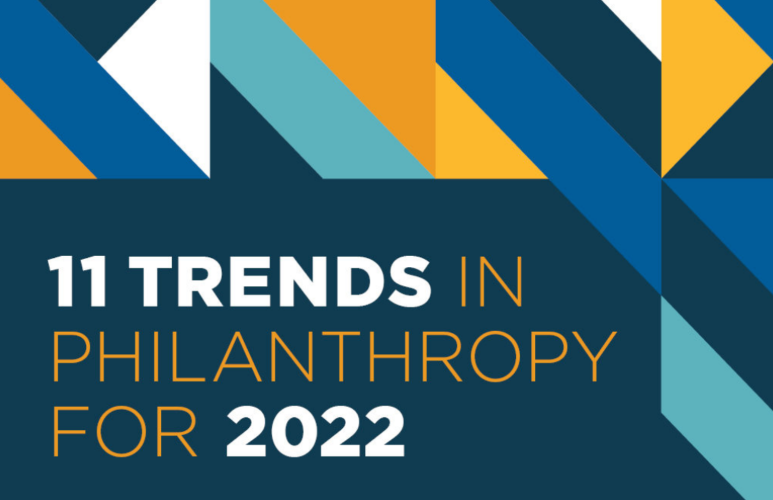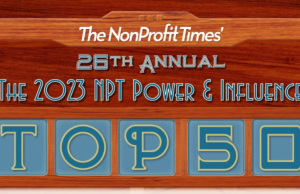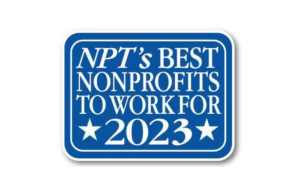The rise of predictive analytics, mobilizing donors of color, cryptocurrency, the so-called culture wars, declines in household giving, and questioning the use of Facebook are but a half-dozen of the topics tackled in “11 Trends in Philanthropy.”
The Dorothy A. Johnson Center for Philanthropy at Grand Valley State University released its sixth annual report highlighting issues facing the nation’s nonprofits in 2022. The Johnson Center was established in 1992 with support from the W.K. Kellogg Foundation and Grand Valley State University.
While previous lists focused on issues discussing philanthropy’s place in a democracy, many of this year’s trends were concentrated on one issue in particular, according to Tory Martin, director of communications and engagement at the Johnson Center. “We found that many of the topics we looked into reflect the sector’s grappling with a profound question: ‘What role does philanthropy play in our national project of e pluribus unum or out of many, one,’” said Martin.
“Donors of color are themselves leading — or are playing an increasingly visible role in leading — many of the shifts we’re seeing in the field,” according to Tamela Spicer, senior program manager, writes in Donors of Color are Mobilizing for Their Communities – Often at the Forefront of Emerging Trends. “As communities of color continue to navigate economic disparity, continued racism, and unprecedented health crises resulting from the pandemic, they are mobilizing in innovative ways for a collective philanthropic impact.”
Emily Brenner, program associate, and Karen Hoekstra, marketing and communications manager raise the issue of charities ditching the world’s largest social media platform in the piece, Nonprofits Are Questioning Their Use of Facebook. “With over 2.9 billion monthly active users worldwide, Facebook provides enormous value to nonprofits as an avenue for awareness-building, community engagement, and of course, fundraising,” they write. Despite its fundraising capabilities, Facebook is at its core an advertising platform with as much as 99% of its revenue coming from advertising. “There’s legitimate concern across our sector that Facebook promotes its work with nonprofits purely as a way to mine donor data — another opportunity to collect and sell more information.”
Philanthropy’s practitioners are in flux, like everyone else, according to Teri Behrens, executive director of the Grand Rapids, Mich.-based Johnson Center. “They’re juggling day-to-day change and wrestling with huge paradigm shifts that could – and often should – redefine our sector fundamentally. We hope this report provides our colleagues with some insights on this evolving landscape.”
The 11 trends are:
- Cryptocurrency and Philanthropy: New Donors and New Questions for Nonprofits, by Julie Couturier, operations director at the Johnson Center
- Reopening Federal Pell Grants for Incarcerated People Means Higher Ed and Funders Can Do More, by Tiana Hawver, office coordinator, and Aaron Yore-VanOosterhout, research manager.
- One Health and Animal Protection Philanthropy: A Small but Growing Sub-Sector, by Jamie DeLeeuw, director of evaluation and impact at Austin Pets Alive! and former research manager at the Johnson Center.
- Philanthropy is Increasingly Embroiled in the Culture Wars, by Teri Behrens, executive director
- Innovations in Talent Investment for Individuals, Organizations, and Communities, by Mandy Sharp Eizinger, program manager; Kevin Peterson, senior program associate; and, Tory Martin, director of communications and engagement
- Increasing Attention to the Decline in Household Giving to Nonprofits, by Michael Moody, Frey Foundation Chair for Family Philanthropy.
- Donors of Color are Mobilizing for Their Communities – Often at the Forefront of Emerging Trends, by Spicer.
- Expanding the Definitions of Philanthropy and Philanthropist, Michael D. Layton, W.K. Kellogg Community Philanthropy Chair.
- Philanthropy is Entering a New Era of Engagement with Native Communities, by Martin; Trish Abalo, research associate; and, Adam Engwis, student intern.
- Nonprofits are Finding New Ways to Get the Data They Need, by Kallie Bauer, senior project manager.
- Nonprofits Are Questioning Their Use of Facebook, by Emily Brenner, program associate, and Karen Hoekstra, marketing and communications manager.
The 34-page report, “11 Trends in Philanthropy,” is available online at johnsoncenter.org











